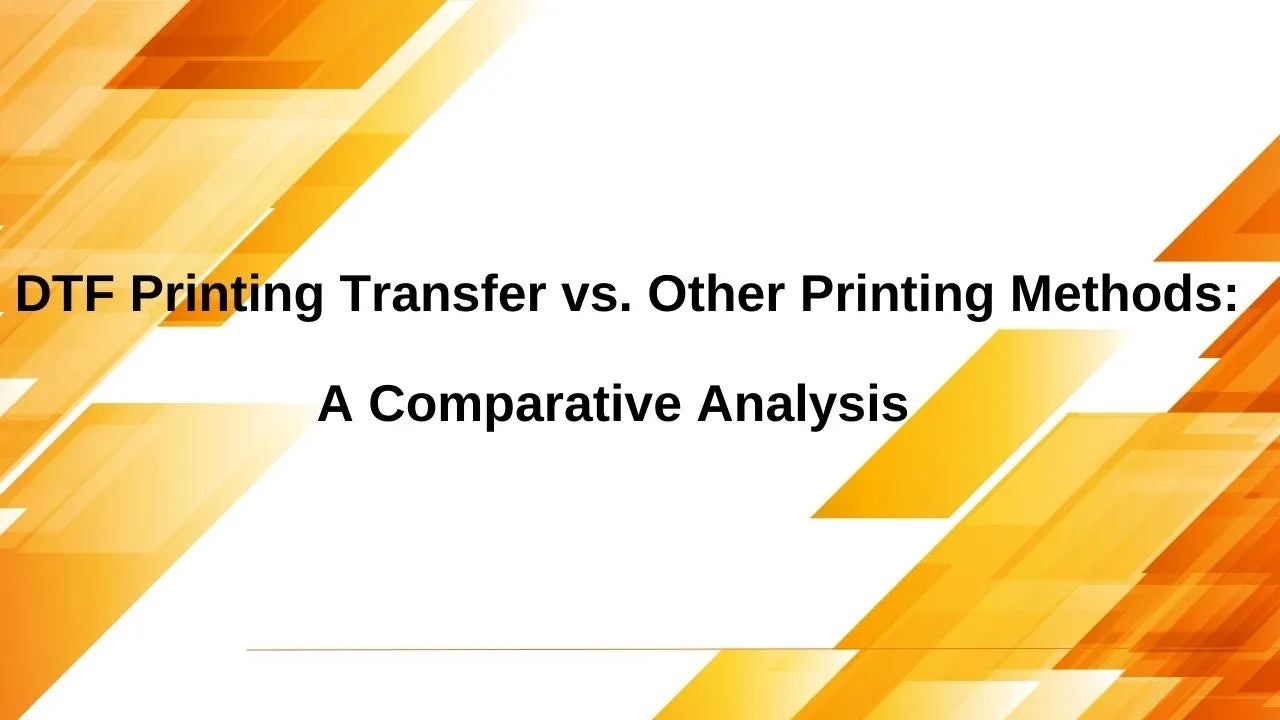
The Role of DTF Print Quality in Achieving Smooth Results

The Role of DTF Print Quality in Achieving Smooth Results
In the world of custom printing, achieving high-quality results is paramount. Whether you're printing designs for apparel, promotional products, or personalized gifts, the quality of your print can make a significant difference in the final product. Direct-to-Film (DTF) printing has become a popular method due to its ability to deliver vibrant, durable designs on a variety of materials. However, to achieve the best results, the quality of the DTF print is crucial.
In this blog, we’ll explore the importance of DTF print quality and how it plays a vital role in ensuring smooth, professional-looking results. We’ll also discuss the factors that influence DTF print quality and how you can optimize your printing process for the best possible outcome.
What Is DTF Printing?
Before diving into the role of print quality, it’s essential to understand what DTF (Direct-to-Film) printing is. DTF printing is a process where a design is printed onto a special transfer film using a high-quality printer. The printed design is then coated with bonding powder, which is heat-cured to create a transfer ready to be applied to various materials, including fabrics, metal, wood, and more.
DTF printing allows for vibrant, full-color designs with sharp details and smooth finishes. The final product is highly durable and resistant to fading, cracking, or peeling, making it an ideal choice for custom apparel and promotional items.
Why Is DTF Print Quality So Important?
The quality of your DTF print directly impacts the look and feel of the finished product. Here are a few key reasons why high-quality DTF printing is essential for smooth results:
1. Vibrant and Clear Designs
High-quality DTF prints capture the full spectrum of colors and details in your design. A well-calibrated printer and premium inks ensure that the colors are vibrant and that the design is sharp and clear. Poor print quality can lead to dull or blurry designs, which could undermine the professional appearance of the final product.
2. Smooth Application Process
When the print quality is high, the transfer film is crisp, and the design adheres smoothly to the surface of the product. A low-quality print may result in uneven or patchy areas, making the transfer process more difficult. This can lead to poor adhesion or visible imperfections on the final product, affecting both the design’s appearance and durability.
3. Durability of the Print
One of the key advantages of DTF printing is its durability. A high-quality print ensures that the design is long-lasting and resistant to fading, peeling, or cracking. When the print quality is compromised, it can result in a weaker bond between the ink and the surface. This weak bond may cause the design to deteriorate quickly, especially after washing or prolonged exposure to wear and tear.
4. Professional Appearance
For businesses that rely on custom printing for branding or promotional purposes, a smooth, high-quality print is essential for creating a professional appearance. High-quality DTF printing can produce intricate designs with fine details and smooth color transitions, which helps create a polished look that impresses customers and clients.
Factors That Influence DTF Print Quality
Several factors influence the quality of DTF prints. Understanding these factors and optimizing your printing process can help you achieve the best possible results.
1. Printer Quality
The type and quality of the DTF printer you use plays a significant role in the print outcome. High-end DTF printers are designed to produce accurate, sharp, and vibrant prints. Investing in a quality printer will provide better control over the printing process, resulting in smoother, more professional results.
2. Ink Quality
DTF printing relies on specialized inks, and the quality of these inks directly affects the print's appearance and durability. Using premium, eco-friendly inks ensures vibrant colors, clear designs, and better adhesion to the transfer film and target surface. Low-quality inks can lead to poor color accuracy, fading, and weak bond strength.
3. Transfer Film Quality
The transfer film used in DTF printing is another critical factor. High-quality transfer films provide smoother application and better adhesion to the substrate. Inferior films can cause issues such as wrinkles, bubbles, or uneven transfers, leading to poor print quality and compromised durability.
4. Bonding Powder
Bonding powder is applied to the printed design to help it adhere to the surface during the heat transfer process. The quality of the bonding powder impacts the final result. High-quality bonding powder ensures a strong and even bond, preventing lifting or cracking of the design. Using the wrong powder or too much powder can negatively affect the print quality.
5. Heat Press Settings
A properly calibrated heat press is essential for transferring the design smoothly. Incorrect temperature or pressure can result in incomplete transfers, uneven adhesion, or warped designs. Ensuring that your heat press is set to the correct temperature and pressure for the material you are using will help achieve a smooth, professional transfer.
How to Achieve High-Quality DTF Prints
To achieve the best DTF print quality and ensure smooth, long-lasting results, consider the following tips:
- Use High-Quality Equipment: Invest in a high-quality DTF printer, transfer film, ink, and bonding powder to ensure vibrant colors, sharp details, and durability.
- Proper Printer Calibration: Regularly calibrate your printer to maintain color accuracy and ensure precise prints.
- Optimize Heat Press Settings: Always check the temperature and pressure settings on your heat press to match the type of material you're printing on.
- Perform Regular Maintenance: Regularly clean and maintain your printer and heat press to keep them running efficiently and avoid potential print quality issues.
- Test and Adjust: Before starting large production runs, perform test prints to ensure that the print quality meets your expectations.
Conclusion
The quality of your DTF print plays a crucial role in achieving smooth, professional results. Vibrant colors, clear designs, and durable prints are all made possible by high-quality equipment, inks, and transfer films. By optimizing each part of the DTF printing process, you can ensure that your final products meet the highest standards, providing your customers with excellent, long-lasting custom prints.
Investing in high-quality DTF printing materials and ensuring proper calibration will help you achieve the best possible results, whether you’re printing apparel, promotional products, or custom gifts. With a focus on print quality, you can create stunning, professional products that will stand out and impress.
Check Out Our Other Products
More information


Leave a comment
This site is protected by hCaptcha and the hCaptcha Privacy Policy and Terms of Service apply.